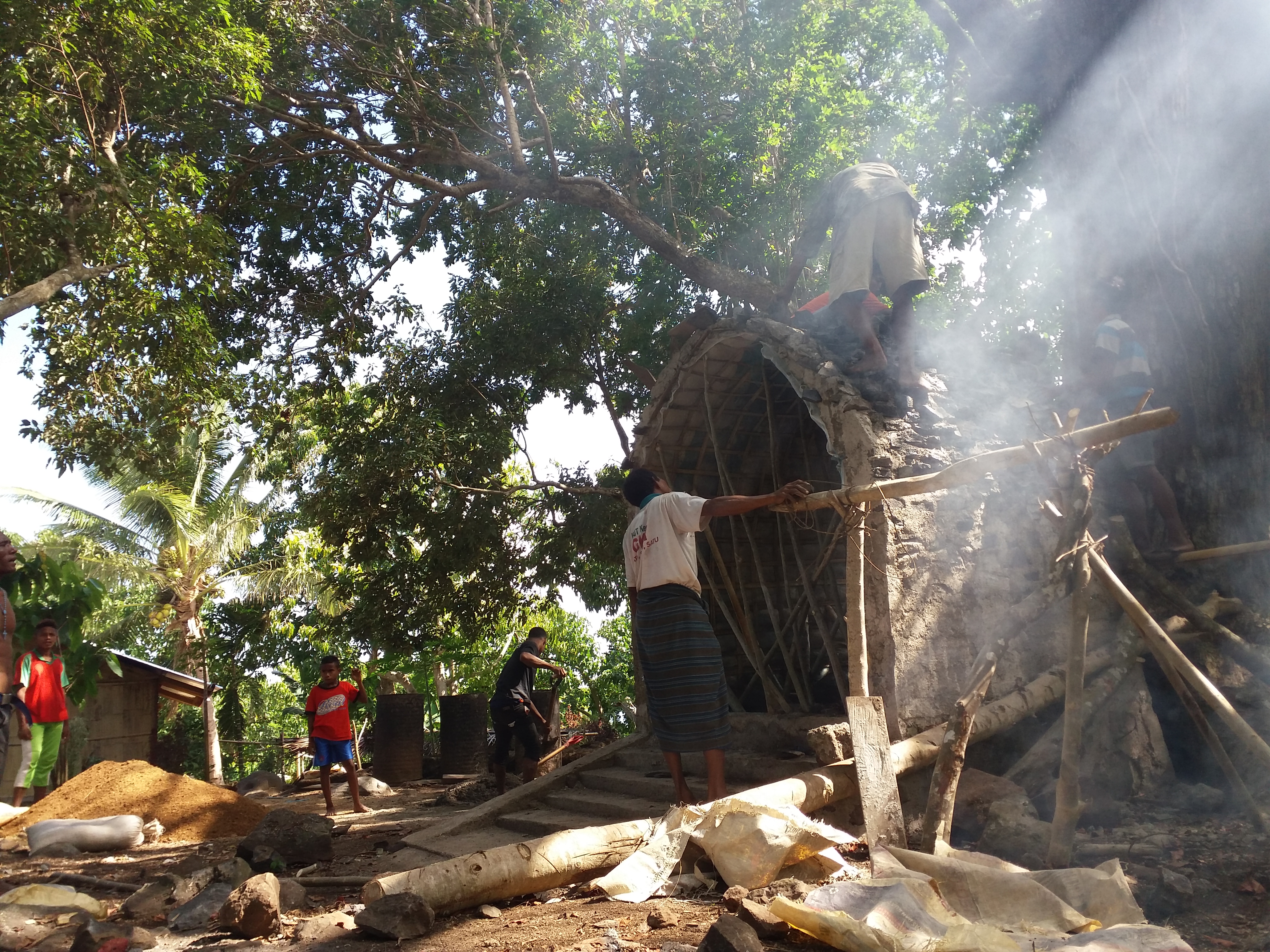Maumere, Vox NTT– When you hear the word Hepang, people in Maumere will remember the village located at the entrance of Lela Sub-district. This area is also often remembered because it passed through the Maumere-Ende highway.
But there is another village also called Hepang on the southern coast of Sikka i.e. in Nen Bura Village, Doreng District.
Currently, Hepang in Nen Bura Village has been transformed into a hamlet occupied by nearly 200 families. The majority of the people are farmers. Some of them are teachers, civil servants and village apparatus.
Since the last two months, the people there have worked together to build a cave. The cave is located at the end of the village is planned to be a place for the statue of the Virgin Mary Statue.
Everything is done with self-help and become a momentum to unite local people. Behind the change is the story of ‘Nahar Bekor’ which inspires the little people in that place.
Nahar Bekor
‘Nahar Bekor’ is the name of a place in Hepang that is believed to be the discovery place of a 20 cm female silver statue.
Nahar’ etymologically means wooden pole where the offerings are placed in traditional rituals in the garden. ‘Bekor’ means appearing or rising.
Local Tana Pu’an (landlord), Robertus Mitan said in the past, long before the arrival of Portuguese missionaries, the local community found a statue of a woman holding a baby with one hand and the globe with her other hand.
The statue came a day after the local ancestors did a ‘plapa lemur’. Plapa pukang is usually held before the growing season to feed the ancestors and nature while asking for blessings to farm properly.
“This is our culture, our strength that we believe is hereditary according to our ancestral narrative,” he said some time ago at his residence in Hepang, Nen Bura Village, Doreng Sub-district.
The statue is believed to have the power that can be used for the good of the local community when needed. One of them is to ask for rain.
“If the planting season and the rain does not come, our ancestors usually use coconut to bathe the statue with coconut water in the spring. By itself will soon rain, ” Robertus explained.

Furthermore, the statue moved from hand to hand following the change of the village leader. According to the story, the statue burned three times. Even once robbed people but re-found in the original place.
In the end the statue of women with magical powers is gone forever. Yet the people there believe the statue as the mother of Mary, the mother of Jesus Christ in Christianity.
Longing Tipped Unity
“We miss our mom and we have found it again,” Robertus Mitan said.
Like a scoop, the longing of Robertus Mitan and the other elders are trying to be realized by a group of young people.
Simpikaris Duna, one of the local youth figures gathered young people to bring back Nahar Bekor. The trick is not to find the same statue but to find a substitute.
“With the help of other parties and our self-help we can finally buy a statue of Mother Marry,” the man who usually called Simpi explained.
Currently they are building a cave to serve as the statue place of the statue of Mary. Everything is done together by utilizing the potential that is around both material and labor.
Representing his colleagues Simpi hope the cave will be a place to visit and pray for anyone in need.
“This history is our strength that unites us,” Simpi said.
Monitoring and information obtained by VoxNtt.com from other residents revealed that ‘Nahar Bekor’ has reunited the local community. Not only work together, they also pray together every night. After finish praying, they usually discuss problems they were facing or problem which is occured in their village.
The cave was about to be finished. There is hope that the cave is blessed and made as a prayer park for all Catholics in the surrounding area.
Author: Are de Peskim
Editor: Rini Kartini/Hos







